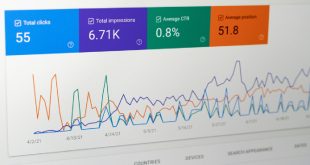When it comes to search engine optimization (SEO) and digital visibility, sitemaps remain one of the most powerful yet underrated tools. In today’s competitive online space, businesses and bloggers who want their websites to rank higher on Google, Bing, or other search engines must understand how sitemaps function. If you’ve ever searched for “Minishortner.Com What Is Sitemap”, this guide will walk you through everything you need to know about sitemaps in 2025 — from definitions to advanced strategies, and why they are more critical than ever.
This article will not only answer what a sitemap is but also explain how modern search engines interpret them, best practices for creating them, common mistakes to avoid, and how they fit into your broader SEO strategy.
Introduction to Sitemaps
A sitemap is essentially a file that lists all the important pages of your website in a structured way, usually in XML or HTML format. This file helps search engine crawlers (like Googlebot) understand your website’s architecture, discover new content, and ensure all relevant URLs are indexed.
Think of a sitemap as a roadmap: without it, search engines may overlook hidden or newly updated pages, but with it, crawlers can systematically navigate and index everything you want to appear in search results.
In 2025, as websites become increasingly complex with dynamic pages, multilingual content, and advanced frameworks, the role of sitemaps has become even more essential.
Also Read: Minishortner.Com What Is Technical Seo
Why Are Sitemaps Important in 2025?
Sitemaps were useful a decade ago, but today they are indispensable. Here’s why:
- Search Engine Indexing: Search engines are smart but not perfect. A sitemap ensures your site is fully indexed.
- Dynamic Websites: Modern CMS platforms generate lots of dynamic content. Sitemaps keep crawlers updated.
- Faster Discovery: New blog posts, eCommerce products, or landing pages can appear instantly in search engines.
- Enhanced SEO Signals: By highlighting priority pages and update frequency, you communicate directly with crawlers.
- Mobile-First Era: With Google’s mobile-first indexing, sitemaps ensure mobile-friendly content gets proper visibility.
Types of Sitemaps You Must Know
There are several types of sitemaps, and understanding them is vital for building a strong SEO foundation.
| Type of Sitemap | Format | Use Case |
|---|---|---|
| XML Sitemap | XML File | Standard sitemap used by Google, Bing, and other search engines. Lists URLs with metadata like last update and priority. |
| HTML Sitemap | HTML Page | Visible to users, helps visitors navigate complex sites easily. |
| Video Sitemap | XML with video-specific tags | Perfect for sites with video content (e.g., YouTube alternatives, course websites). |
| Image Sitemap | XML with image data | Ensures images appear in Google Images search results. |
| News Sitemap | Specialized XML | For publishers to ensure news content appears quickly in Google News. |
In short, the sitemap you need depends on your site’s structure and goals.
How Search Engines Use Sitemaps
Sitemaps act like an invitation card for search engines. When crawlers visit your site, they look for a sitemap.xml file to quickly identify what’s worth crawling. Here’s how the process works:
- Crawlers Access Sitemap: They start with your sitemap and analyze the listed URLs.
- Metadata Signals: Crawlers read attributes such as
<lastmod>,<changefreq>, and<priority>. - Efficient Crawling: Instead of guessing links, they systematically crawl relevant pages.
- Indexing Decision: The crawler decides which pages to index or skip based on quality and uniqueness.
This makes a sitemap a critical communication channel between you and search engines.
Also Read: Minishortner.Com Content Seo Hub: Advanced Tactics for Content Optimization
The Evolution of Sitemaps Till 2025
Sitemaps have not remained static — they have evolved significantly:
- 2005–2010: Basic XML sitemaps introduced to help Google discover URLs.
- 2010–2015: Support for images, videos, and news added.
- 2016–2020: Integration with mobile-first indexing and AMP pages.
- 2021–2024: AI-driven crawling systems made sitemaps more crucial for complex JavaScript websites.
- 2025 and Beyond: Sitemaps are now optimized for AI search engines that evaluate site authority, semantic relevance, and structured data more deeply.
Benefits of Having a Sitemap in 2025
| Benefit | Explanation |
|---|---|
| Faster Indexing | New content gets discovered quickly. |
| Better SEO Rankings | Organized content signals quality to search engines. |
| User-Friendly Navigation | HTML sitemaps help visitors explore. |
| Supports Multimedia | Ensures images, videos, and news are indexed. |
| Essential for Large Sites | Keeps big websites with thousands of URLs well-structured. |
How to Create a Sitemap
Creating a sitemap is easier than ever in 2025 thanks to CMS plugins and online tools.
Option 1: Use CMS Tools
- WordPress: Plugins like Yoast SEO, RankMath, or All-in-One SEO automatically generate XML sitemaps.
- Shopify/Wix/Squarespace: These platforms auto-generate sitemaps without extra setup.
Option 2: Use Online Generators
Websites like Minishortner.Com or Screaming Frog SEO can generate a sitemap quickly.
Option 3: Manually Create
For developers, manually coding a sitemap in XML provides full control.
Best Practices for Sitemaps in 2025
- Keep It Updated: Ensure your sitemap reflects new pages and removes broken ones.
- Submit to Search Engines: Use Google Search Console and Bing Webmaster Tools.
- Limit Size: One sitemap should not exceed 50,000 URLs or 50MB.
- Prioritize Key Pages: Use
<priority>tags wisely. - Segment Sitemaps: Large websites can use sitemap indexes to group multiple sitemaps.
- Use HTTPS URLs Only: Avoid duplicate HTTP links.
- Combine with Robots.txt: Reference sitemap location inside your
robots.txtfile.
Common Sitemap Mistakes to Avoid
- Listing non-canonical URLs.
- Including pages blocked by robots.txt.
- Forgetting to update after major redesigns.
- Having multiple duplicate sitemaps.
- Ignoring images, videos, or multilingual content.
Sitemap vs Robots.txt: Key Differences
| Aspect | Sitemap | Robots.txt |
|---|---|---|
| Purpose | Lists URLs for indexing | Controls crawler access to URLs |
| Visibility | Helps search engines discover content | Restricts search engines from crawling |
| Format | XML or HTML | Plain text |
| Usage | Tells search engines “please index this” | Tells search engines “don’t crawl this” |
Both are complementary — use them together for the best SEO outcomes.
Advanced Sitemap Strategies in 2025
If you want to stay ahead, here are pro-level tactics:
- Dynamic Sitemaps: Automatically update based on site changes in real-time.
- AI-Optimized Prioritization: Tools now analyze user engagement to rank pages.
- Integration with Schema Markup: Combining structured data with sitemaps boosts semantic indexing.
- Multilingual & Multi-Regional Sitemaps: Essential for global businesses.
- API-Driven Sitemaps: Some platforms directly connect to search engine APIs for instant indexing.
Tools to Generate and Manage Sitemaps
Here are some of the most popular tools in 2025:
- Google XML Sitemap Generator
- Yoast SEO (WordPress)
- RankMath SEO Plugin
- Screaming Frog SEO Spider
- Ahrefs & SEMrush (advanced sitemap auditing)
- Minishortner.Com Sitemap Tools
Minishortner.Com What Is Sitemap – Why This Matters for You
By now, you know the answer to “Minishortner.Com What Is Sitemap” is not just a technical definition but a crucial element of your SEO ecosystem. Without an optimized sitemap, even the best content can remain hidden from search engines.
Minishortner.Com offers accessible tools for beginners and advanced marketers alike to generate, analyze, and maintain sitemaps — ensuring your website is future-proofed for SEO success in 2025 and beyond.
Conclusion
A sitemap is no longer optional — it’s a core SEO necessity. Whether you’re running a small blog, a growing eCommerce business, or a global enterprise site, your sitemap ensures that search engines can efficiently crawl, index, and rank your pages.
The keyword “Minishortner.Com What Is Sitemap” is not just about curiosity; it represents the foundation of digital visibility. In 2025, websites that neglect sitemaps risk being invisible in a world where online presence defines success.
So, if you haven’t already, create and optimize your sitemap today. Submit it to Google Search Console, keep it updated, and watch how it transforms your SEO results.
 Blogging Heros
Blogging Heros




